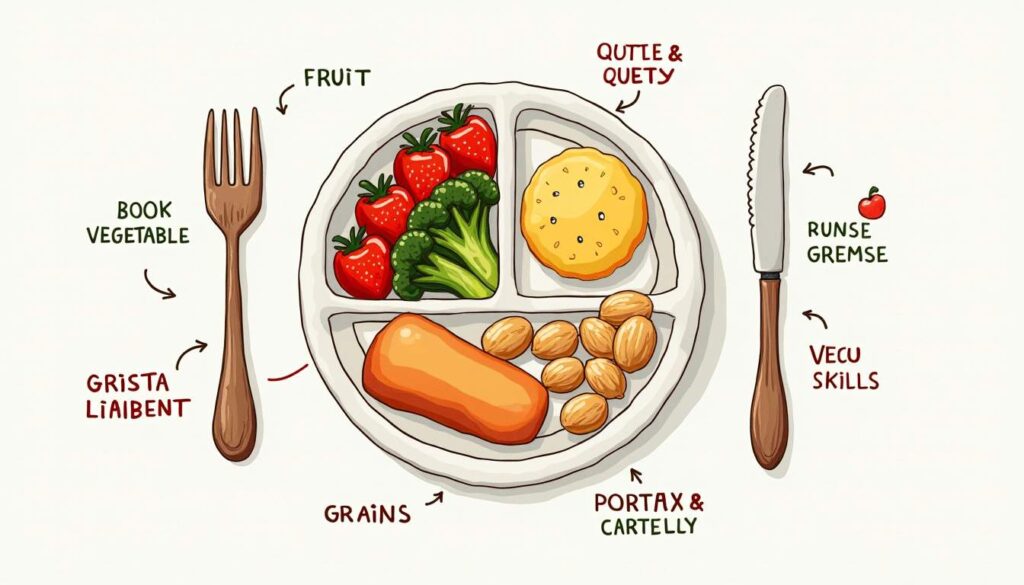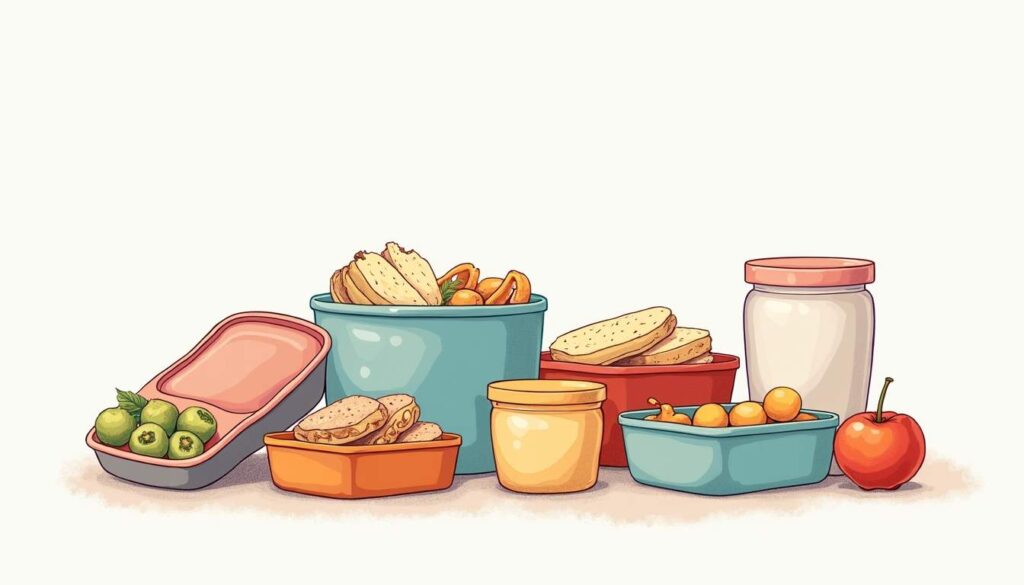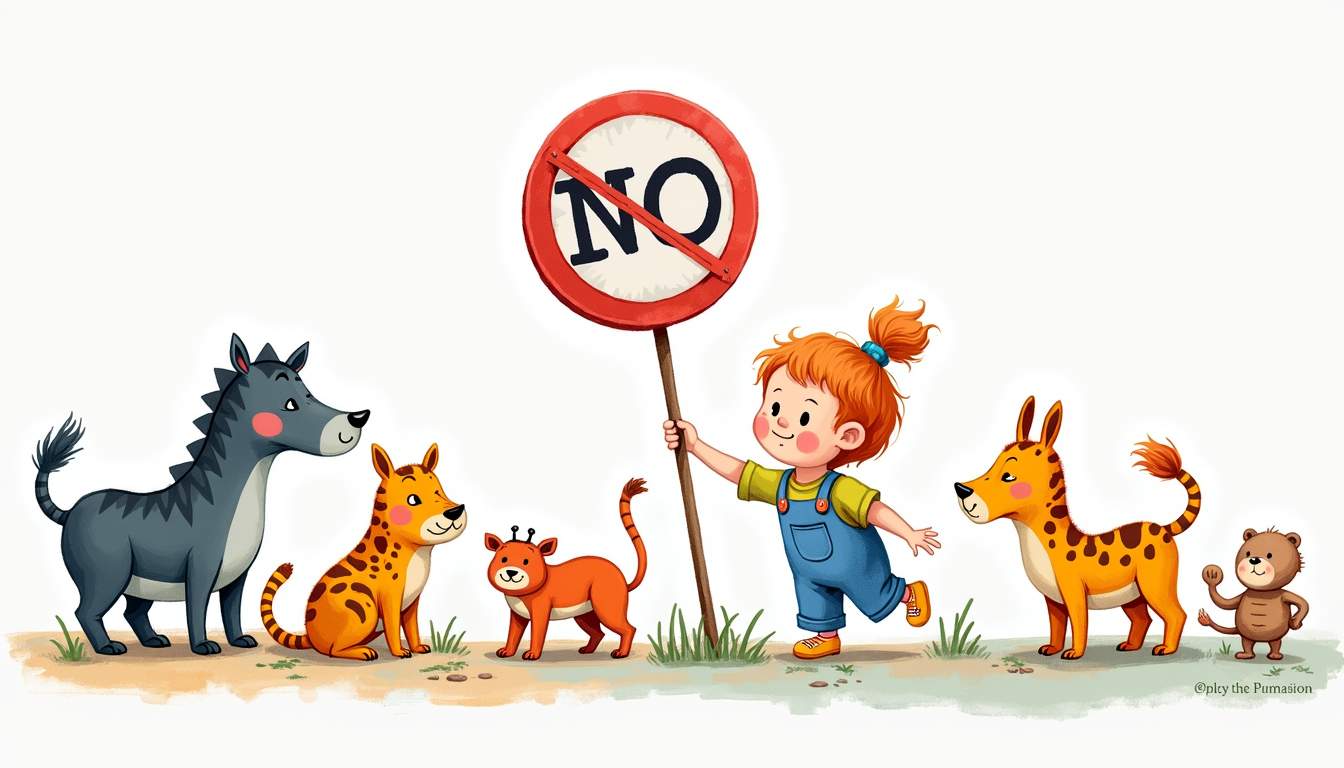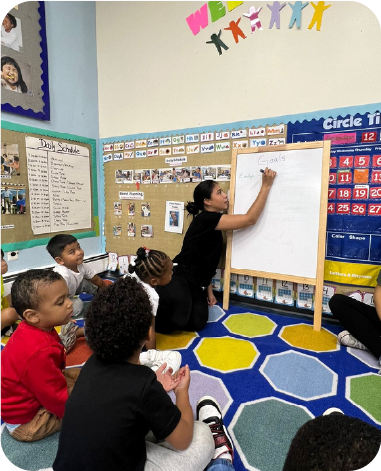Packing a lunch for a toddler can be both a delightful and daunting task. Parents often find themselves balancing nutrition, taste, and presentation to ensure their little ones enjoy their meals. A well-prepared lunch can make a significant difference in a toddler’s day, providing them with the energy they need to explore and learn. This guide will explore various strategies, tips, and ideas to help you pack the perfect lunch for your toddler.
Understanding Toddler Nutrition
Before diving into lunch packing strategies, it’s essential to understand the nutritional needs of toddlers. At this stage, children are growing rapidly and require a balanced diet to support their development. Proper nutrition not only fuels their daily activities but also lays the groundwork for lifelong healthy eating habits. Parents and caregivers play a crucial role in shaping these habits by introducing a wide array of foods and flavors early on, which can help prevent picky eating later.

Essential Food Groups
When planning a toddler’s lunch, consider including a variety of food groups. A balanced meal typically consists of fruits, vegetables, proteins, grains, and dairy. Each group plays a vital role in providing the necessary nutrients for growth and development. For instance, fruits and vegetables offer essential vitamins and minerals, while proteins are crucial for muscle development. Grains provide energy, and dairy products contribute to bone health. Striving for a colorful plate can also make meals visually appealing to toddlers, encouraging them to try new foods. Incorporating a mix of textures—such as crunchy carrots, soft bananas, and creamy yogurt—can further entice toddlers to explore their meals with curiosity and excitement.
Additionally, introducing seasonal fruits and vegetables can enhance the nutritional value of meals while also teaching toddlers about the importance of eating fresh, local produce. For example, during summer, juicy watermelon and sweet corn can be delightful additions, while winter might bring hearty squash and vibrant citrus fruits. This not only keeps meals interesting but also fosters an appreciation for the variety that nature has to offer.
Would you like to check out one of the top-rated childcares in New Jersey? Schedule a tour with us!
Portion Sizes
Portion sizes for toddlers differ significantly from those of adults. A toddler’s stomach is small, so offering smaller portions is key. Aim for about one tablespoon of each food group for every year of age. For instance, a three-year-old may enjoy three tablespoons of fruits, vegetables, and grains, along with a protein source. It’s also important to remember that toddlers may not finish their meals. Offering a variety of foods can help ensure they get the nutrients they need, even if they only eat a little from each category. This approach not only reduces mealtime stress but also allows toddlers to listen to their own hunger cues, promoting a healthy relationship with food.
Moreover, involving toddlers in the meal preparation process can be a fun way to encourage them to try new foods. Simple tasks like washing fruits, stirring ingredients, or arranging their plates can spark their interest and make them more likely to eat what they’ve helped create. This hands-on experience not only enhances their fine motor skills but also instills a sense of pride and ownership over their meals, making lunchtime a more enjoyable and engaging experience.
Choosing the Right Containers
The type of container used for packing lunch can significantly impact both the presentation and the freshness of the food. Selecting the right containers can make lunchtime more enjoyable for toddlers.

Leak-Proof and Insulated Options
Investing in leak-proof containers is essential, especially when packing foods like yogurt or dips. Insulated containers can keep foods at the right temperature, ensuring that meals remain fresh until lunchtime. This is particularly important for items like soups or stews, which can be a hearty option for colder days.
Fun and Engaging Designs
Children are often drawn to colorful and fun designs. Choosing containers with their favorite characters or bright colors can make lunchtime more exciting. Bento boxes, for example, offer compartments that allow for a variety of foods, making it easy to create a visually appealing meal.
Creative Lunch Ideas
Now that the basics are covered, it’s time to get creative! Here are some fun and nutritious lunch ideas that are sure to please even the pickiest of eaters.

Wraps and Roll-Ups
Wraps are an excellent option for toddlers, as they are easy to hold and eat. Use whole grain tortillas or wraps and fill them with a variety of ingredients. Popular combinations include turkey and cheese, hummus and veggies, or peanut butter and banana.
For added fun, try cutting the wraps into pinwheels or strips. This not only makes them easier to eat but also adds an element of playfulness to the meal.
Miniature Versions of Favorites
Transforming traditional meals into toddler-friendly bites can make them more appealing. For example, mini sandwiches made with small bread slices or cut into fun shapes can be a hit. Similarly, mini meatballs or sliders can be a delightful addition to lunch.
Pair these miniature meals with bite-sized fruits and veggies, such as cucumber slices, cherry tomatoes, or apple wedges, to create a balanced and enjoyable lunch.
DIY Lunchables
Store-bought Lunchables can be convenient, but making your own can be healthier and more cost-effective. Pack whole grain crackers, cheese slices, and deli meats or nut butter in separate compartments. Adding a small container of fruit or a sweet treat can make it feel like a special meal.
Encouraging toddlers to assemble their own Lunchables can also make lunchtime interactive and fun. This hands-on approach can help develop fine motor skills and independence.
Incorporating Fruits and Vegetables
Fruits and vegetables are vital for a toddler’s diet, yet they can sometimes be challenging to include. Here are some tips for making these food groups more appealing.
Fun Presentation
Presentation can make a significant difference in how toddlers perceive their food. Arranging fruits and vegetables in fun shapes or patterns can pique their interest. For example, creating a fruit salad with a rainbow of colors or arranging veggies into a smiley face can make the meal more inviting.
Using cookie cutters to shape fruits and veggies into stars or hearts can also add an element of fun. Pairing these with a tasty dip, like yogurt or hummus, can encourage toddlers to try new flavors.
Would you like to check out one of the top-rated childcares in New Jersey? Schedule a tour with us!
Incorporating into Other Dishes
Incorporating fruits and vegetables into other dishes can also be effective. For instance, adding shredded carrots or spinach to pasta or mixing fruits into yogurt can enhance the nutritional value of a meal without overwhelming a toddler with unfamiliar foods.
Smoothies are another excellent way to sneak in fruits and vegetables. Blending spinach with bananas and yogurt can create a delicious and nutritious drink that toddlers will love.
Making Lunchtime Fun
Creating a positive lunchtime experience can encourage toddlers to enjoy their meals and try new foods. Here are some ways to make lunchtime more enjoyable.
Involve Your Toddler
Involving toddlers in the lunch-packing process can foster a sense of ownership and excitement about their meals. Allow them to choose between different fruits, veggies, or proteins. This not only makes them more likely to eat what’s packed but also helps them develop decision-making skills.
Letting toddlers help with simple tasks, like washing fruits or arranging items in their lunchbox, can also be a fun bonding experience. This engagement can lead to a more positive attitude toward eating.
Creating a Lunchbox Surprise
Adding a little surprise to the lunchbox can make lunchtime feel special. This could be a handwritten note, a small toy, or a favorite sticker. These little touches can brighten a toddler’s day and make them look forward to lunchtime.
Consider including a small treat, like a piece of dark chocolate or a homemade cookie, as a reward for trying new foods. This can create a positive association with mealtime and encourage adventurous eating.
Addressing Common Challenges
Picky Eaters
Picky eating is a common phase for toddlers. If a child refuses to eat certain foods, it’s essential to remain patient and persistent. Offering a variety of foods without pressure can help them explore different tastes.
Consider introducing new foods alongside familiar favorites. This can create a sense of comfort while encouraging toddlers to try new flavors. Repeated exposure to new foods can also increase the likelihood of acceptance over time.
Food Safety Concerns
Food safety is critical when packing lunches, especially for perishable items. It’s essential to keep food at the right temperature to prevent spoilage. Using ice packs in lunchboxes can help maintain freshness, particularly for dairy products and meats.
Be mindful of expiration dates and ensure that all food is stored correctly. Teaching toddlers about food safety, such as washing hands before eating, can also promote healthy habits.
Packing the perfect lunch for a toddler is an art that combines creativity, nutrition, and fun. By understanding their nutritional needs, choosing the right containers, and incorporating engaging food ideas, parents can create meals that are both appealing and nourishing.
Involving toddlers in the lunch-packing process and addressing common challenges can further enhance the experience. With a little planning and creativity, lunchtime can become a joyful and exciting part of a toddler’s day.
Ultimately, the goal is to foster a positive relationship with food while ensuring that toddlers receive the nutrients they need for healthy growth and development. Happy lunch packing!
Would you like to check out one of the top-rated childcares in New Jersey? Schedule a tour with us!











